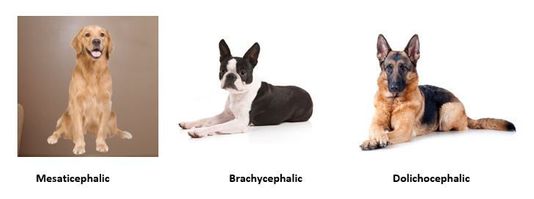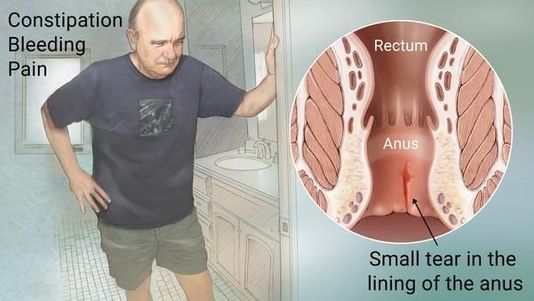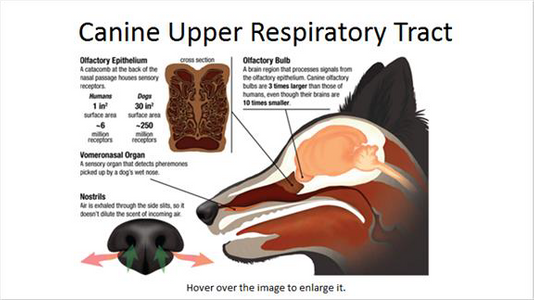What is Cephalic Index in Dogs and Cats?
What is Cephalic Index in Dogs and Cats?
A Cephalic Index is a relationship between width and length of the skull. Breeds with equal cranial width and length are called Mesaticephalic e.g. Golden Retrievers, Cocker Spaniel. Breeds with cranial widths greater than lengths are referred to as Brachycephalic e.g. Boston terrier, Pugs. Breeds with cranial lengths greater than width are referred to as Dolichocephalic.
Why is Cephalic Index important?
Cephalic Index helps veterinary compounding pharmacists to determine drug effects in Felines and Canines. For example Mesaticephalic are most like humans in terms of drug effects on cephalic anatomy. Brachycephalic breeds are more susceptible to airway obstruction and adverse effects of drugs that cause respiratory depression. They also have more difficulty cooling themselves by panting. Hence drugs that increase body temperature and decrease respiratory depression must be used with caution. Dolichocephalic breeds have keener olfactory ability so they are more likely to reject unpalatable medications or get into your medicine cabinet and unintentionally ingest flavored medications.
Our compounding pharmacists at A&O Compounding are C4 Veterinary Certified and specifically trained to note weight and breed of species on their prescription orders to custom compound medications and counsel pet owners of these differences.
moreCOMPOUNDED CREAM FOR RADIATION DERMATITIS OR SHINGLES PAIN
What is Radiation Dermatitis or Shingles Pain? Radiation burn or Radiation Dermatitis is a common side effect of external beam radiation therapy to treat some form of cancer. Radiation can make skin sore, peel, itch or turn red. Shingles pain is caused when person suffers from shingles.
What formulations are available commercially to treat Radiation Dermatitis and Shingles Pain? Commercially available formulations include emollient creams (which is often ineffective) or corticosteroids which cause dermal atrophy and other adverse effects). These products are usually ineffective or are not available or prove objectionable to patient (e.g. steroids can only be applied if skin is intact, peeled or sore skin might not be suitable to corticosteroid application). Oral pain medications are also available, but they come with several unwanted side effects like GERD and increased BP.
What compounded formulations are available to help with Radiation burns or Shingles Pain? Studies have shown that Melatonin 0.5%/Lidocaine 5% Cream when applied as directed throughout prescribed course of radiation therapy and continued its use for 3 weeks after last radiation therapy. Melatonin is a highly lipophilic hormone produced primarily by the pineal gland. Melatonin is safe and effective in radiation dermatitis and shingles pain. Melatonin has been shown to
moreNovel Compounded Medications for Anal Fissure Pain
What is Anal Fissure?
An Anal Fissure is a small tear in a thin, moist tissue (mucosa) that lines the anus. Fissures result from the stretching of your anal mucosa beyond its normal capacity. This often happens when stools are hard due to constipation. Once the tear happens, it leads to repeated injury. The exposed internal sphincter muscle beneath the tear goes into spasm. This causes severe pain. The spasm also pulls the edges of the fissure apart, making it difficult for your wound to heal. The spasm then leads to further tearing of the mucosa when you have bowel movements. This cycle leads to the development of a chronic anal fissure in approximately 40% of patients.
Compounded Treatment Options:
Chronic recurring wounds such as Anal fissures are often refractory to treatment with commercially available medications. Custom compounded formulations that include drugs proven effective in off label use but safe may achieve therapeutic goal. Two such agents are (i) Nifedipine, a calcium channel blocker, exhibits antioxidant properties. It increases collagen accumulation and fibroblast proliferation by promoting nitric oxide production, the effects of which enable healing of dermal wound. Nifedipine must be used with caution in patients with liver dysfunction (ii) Pentoxifylline, a synthetic dimethylxanthine derivative, induces a decrease in local elastase and fibrin deposits, procollagen synthesis, procollagen ribonucleic acid levels and level of nuclear factor-1 and inhibits collagen synthesis by dermal fibroblasts, all of which promote wound healing. A&O Compounding has compounded formulations specifically designed by their formulation specialists that incorporate such agents for example Nifedipine 1%/Pentoxifylline 1% in White Petrolatum.
moreCanine Epilepsy
What is Canine Epilepsy?
Canine Epilepsy is one of the most common ailments. There is usually no obvious cause and seizure threshold is simply decreased. However, genetic predisposition is suspected in German Shepherds, Belgian Tervurens, Keeshonds, Beagles, Dachshunds, Labrador Retrievers, Shetland Sheepdogs, Irish Wolfhounds, Bernese Mountain Dogs and English Springer Spaniels. Onset typically occurs between 6 months to 3 years of age but may appear later. Typically the younger the onset the more refractory epilepsy is to the therapy. The prognosis is good in treated dogs that have less than 1 seizure every 12-16 weeks. Treatment of epilepsy requires commitment of both time and money by owners.
Are there any treatment options?
There are treatment options. The anticonvulsant therapy is initiated when the seizure interval is less than 12-16 weeks. Seizures begin to cluster, Canine experience atleast one episode of Status Epilepticus (series of seizure or continuous seizure lasting 5 minutes or longer). Phenobarbital, Potassium Bromide, Zonisamide, Levetiracetam and Gabapentin are most common medications used for treatment of Canine idiopathic epilepsy.
moreAntibiotics for Cats and Dogs
Did you know that not all the antibiotics that may be suitable for your dog may not be suitable for your cat? One such example is a common antibiotic called Enrofloxacin (Baytril). Enrofloxacin (Baytril) is a commonly administered antibiotic to dogs however when the same antibiotic if administered to cats may cause retinal toxicity and blindness. The reason is because in cats there are specific amino acid changes in the ABCG2 transporter at the blood-aqueous barrier cause a functional defect of the transport protein, allowing enrofloxacin to enter the inner eye. When light enters the inner eye through the pupil, enrofloxacin is photoactivated to reactive oxygen species that are toxic to the retina of cats. A safer alternative (e.g., marbofloxacin) should be considered.
At A&O Compounding our veterinary compounding pharmacists and formulation specialist are trained to know these differences. We are always careful to note down the species and their body weight on our prescriptions. Sometimes there are breed specific adverse events in felines and canines. Hence, we also note down the breed of the animals.
Call today at 831-769-0458 to speak to one of staff members to experience the difference in care of your four-legged furry friends!
moreAll About the Base
All About That Base: A Guide
Precision is Key
When we compound a cream or gel, a lot of work goes into putting it together just right. The ingredients are weighed out to the thousandth of a gram, the particles are reduced to a fifth the diameter of a human hair, and the whole thing is mixed in a planetary rotation at 2000 rpm.
But for all the work we put into making a cream, it wouldn’t be nearly as effective if we didn’t choose the right base.
Why does it Matter?
In compounding, the base is the actual cream or gel we put the active ingredients into. It’s the vehicle that holds the active ingredients together and the driver that gets them where they need to be in your body. But since the chemical structures of each ingredient differ, as does the intent of each cream, we have different bases for different purposes.
For example, men could absorb 2.73 times more testosterone using one base over another so we understand the importance of picking the right one. A pet owner may have trouble giving medication by mouth hence we can convert them to gel or a cream that can simply be applied on cat’s or dog’s ears. So what bases do we use, and how do we determine which one is right for you?
moreDog's Sense of Smell
Smell is the dog’s most keen sense. A dog’s sense of smell is said to be 1,000 times more sensitive than a human’s. Dogs have an extra olfactory organ called the vomeronasal organ or Jacobson’s organ. This organ is important in detecting pheromones and possibly body scents. Dogs continually sniff the air, ground and things nearby to get information on what is happening around them. The design of the nostrils accommodates this process. A dog’s nose is usually cool and wet. This moisture captures and dissolves molecules in the air to bring them in contact with the olfactory epithelium inside the nose.
Dogs sniff to maximize their detection of odors. When they sniff continuously, washing out of the odor does not occur due to the presence of a nasal pocket created by the bony subethmoidal shelf. This pocket allows the unrecognizable odors to accumulate and interact with the olfactory receptors longer. This process allows information to be passed along to the olfactory nerves and eventually to the dog’s brain aiding the dog in recognizing a scent and following a trail. This makes canines excellent “co‐workers” for the U.S. Customs and Border Patrol; as well as the U.S. Department of Homeland Security.
moreBrachycephalism (honking cough in canines)
Introduction:
Breeds (Pugs, Boston Terriers, Bull Dogs, Mastiffs and Shih Tzus) that have significantly shorter muzzles and tracheas are referred to as brachycephalic. This characteristic predisposes these breeds to respiratory difficulties such as collapsing trachea. Tracheal collapse is a condition which is characterized by loss in diameter of the airway due to changes in the structure of the trachea caused by lack of chondroitin and/or glycoproteins. The weakened cartilage allows the tracheal ring to flatten and the trachea collapses. A dry “honking” cough is characteristic of tracheal collapse. Exercise intolerance, tachypnea, or respiratory distress are common signs.¹⁹ The compounding veterinary pharmacist can combine several drugs that work synergistically to treat this condition because no one commercially available drug usually takes care of this condition. An example is a formula which combines theophylline, ephedrine, potassium iodide, phenobarbital, and isoproterenol into a flavored liquid. Drugs that suppress the respiratory system should be used very carefully in these dogs. One benefit of brachycephalism is that the dog has less “smelling” capability, therefore we are usually able to administer medications to these dogs without them sniffing the dose and then refusing it. Unfortunately, because of their shorter muzzle , it is more difficult for the owner to grasp the dog’s mouth presenting a challenge in dosing. The veterinary compounding pharmacist can help in offering dosage form options that do not require grasping of the dog’s mouth.
moreEar Infections in Dogs (CANINE OTITIS EXTERNA)
Ear Infections in Dogs (CANINE OTITIS EXTERNA)
Introduction:
Canine otitis externa accounts for 10‐13% of veterinary hospital visits, according to an article in Today’s Veterinary Practice. One common characteristic among breeds that have a tendency toward this condition is pendulous pinnae, or floppy ears. It is especially common in breeds such as Spaniels and Retrievers but also seen in Terriers and Poodles.Breeds that have stenosis of the external ear canal or hirsutism can also be affected. The ears restrict proper air flow into the ear canal, which sets up a moist environment that is conducive for bacterial and fungal growth. Excessive swimming without proper drying of the ears can also set up this type of environment in the ear. This is seen in breeds such as Retrievers that are used in waterfowl hunting. Additionally, overzealous cleaning of the ears by owners trying to prevent otitis can actually predispose the canine to the condition. Atopy (atopic dermatitis, eczema, immune mediated skin hypersensitivity, and allergic dermatitis) triggered by allergens can also cause otitis externa. Otitis externa/media is not limited to any specific age and is not genetically determined. Otitis externa is often a secondary symptom of an underlying disease.
moreVETERINARY COMPOUNDING FOR BIRDS
FEATHER PICKING
Definition:
Feather picking in pet birds is an obsessive, destructive behavior pattern whereby a bird plucks, amputates, chews or, in some other way, destroys some or most of its feathers that it can reach with its beak.
Causes:
- Environmental: Inappropriate cage size, Lack of sunlight, stressful noises
- Nutritional (most common): Nutritional absence of Zn, Mg, Mn and Vitamin A
- Underlying Disease: Feather/Skin follicle infection
- Separation Anxiety: Owners are gone on vacation and bird is alone.
Nutritional Imbalances Therapies:
Nutritional absence of Zn, Mn, Mg and Vitamin A. Imbalance occurs when there are all seed diets without fruits and veggies. It is seen with all types of birds except may be raptors.
Avian Veterinary Compounding Options:
Our C-4 Veterinary Compounding Specialists at San Jose Compounding can custom compound following formulations when prescribed by a veterinarian.
Zn/Mg/Mn/Vitamin A Oral Solution (individualized) for nutritional deficiency.
Fluconazole 100mg/ml Pina Colada Oral Suspension (Avian) for fungal underlying disease.
more









